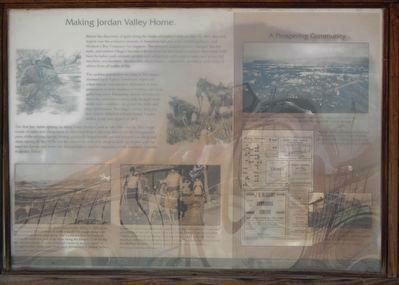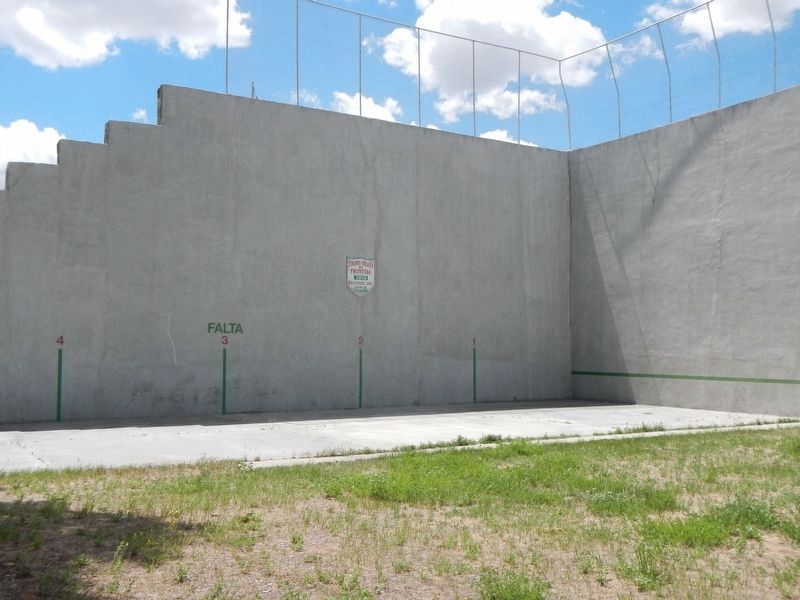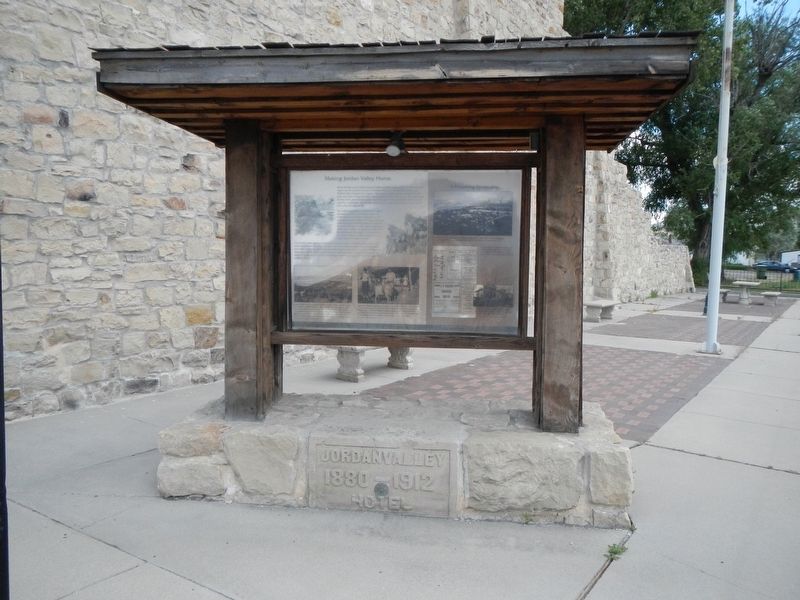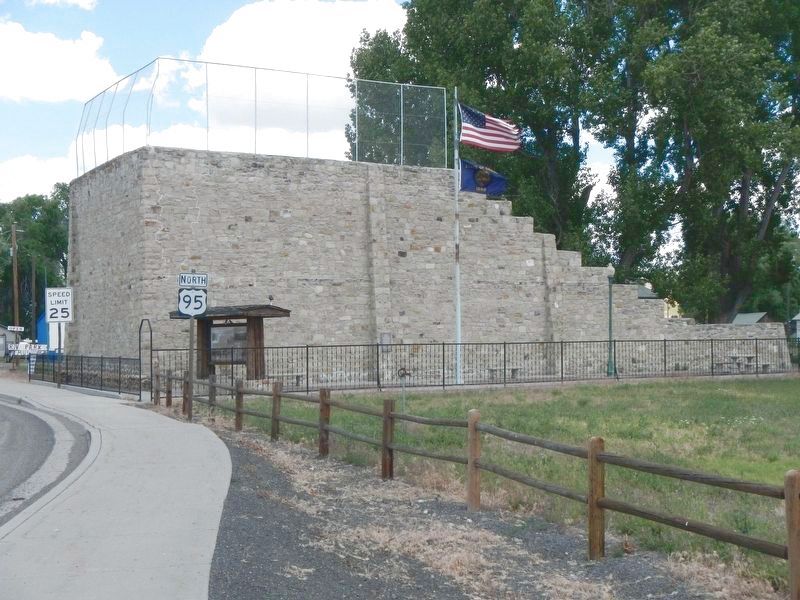Jordan Valley in Malheur County, Oregon — The American West (Northwest)
Making Jordan Valley Home

Photographed By Barry Swackhamer, June 27, 2017
1. Making Jordan Valley Home Marker
Captions: (bottom left) Agricultural ventures were flourishing by the 1870s. In 1888 alone an estimated 100,000 head of cattle roamed this range along with thousands of horses and sheep. The westward flow of livestock across the northern part of the state along the Oregon Trail during the previous three decades reversed course as heard of Oregon horses, cattle and sheep were driven east to Jordan Valley.; (bottom 2nd left) Squatters, claiming possessory rights by laying out a piece of land and occupying it, moved in during the late 1860s. Others has Preemption Claims, some took up Timber Culture claims, and finally the Homesteaders, who built more permanent homes. They laid the groundwork for Malheur County's number one industry today, agriculture.; (sidebar on right) A Prospering Community; (upper right) A bird's eye view of Jordan Valley in the early 1900s. Many of the buildings pictured here still exist. Note the pelota court in the upper left next to the hotel. (newspaper advertisements) A page of advertising from the local newspaper. Jordan Valley Express, September 29, 1910, displays a wide range of goods and services available.; (bottom right) Jordan Valley General Mercantile, circa 1930. Here one could by a suit of clothes for fifteen dollars.
The sudden population increase in this region alarmed local Native Americans, especially when miners and ranchers disturbed or took possession of their traditional hunting and food gathering areas. Harassing attacks intended to drive the newcomers away, only brought more white men - soldiers - to guard the trails and tiny settlements. This tragic conflict between two widely different cultures lasted 5 years until a treaty was signed in 1868.
The first hay farms sprung up along lower Jordan Creek in late 1863, and by 1865, large bands of cattle and sheep were on their way from California bound for the slaughtering pens of the mining camps. Mining gradually began to take second place to ranching and stock raising by the 1870s, but the import of cattle and sheep to feed the miners and the need for horses and mules for transportation was the beginning of the livestock industry in Jordan Valley.
Topics. This historical marker is listed in these topic lists: Agriculture • Settlements & Settlers. A significant historical date for this entry is May 18, 1863.
Location. 42° 58.462′ N, 117° 3.177′ W. Marker is in Jordan Valley, Oregon, in Malheur County. Marker is on Bassett Street (U.S. 95) near Yturri Boulevard, on the left when traveling south. Touch for map. Marker is in this post office area: Jordan Valley OR 97910, United States of America. Touch for directions.
Other nearby markers. At least 1 other marker is within walking distance of this marker. Skinner's Toll Road (approx. 0.2 miles away).

Photographed By Barry Swackhamer, June 27, 2017
4. Pelota Court
Ko
Frontolia
1915
Restored 1997
Danok Etorri
Basque pelota ... is the name for a variety of court sports played with a ball using one's hand, a racket, a wooden bat or a basket, against a wall (frontis or Fronton) or, more traditionally, with two teams face to face separated by a line on the ground or a net. - Wikipedia
Credits. This page was last revised on August 12, 2017. It was originally submitted on August 12, 2017, by Barry Swackhamer of Brentwood, California. This page has been viewed 322 times since then and 44 times this year. Photos: 1, 2, 3, 4. submitted on August 12, 2017, by Barry Swackhamer of Brentwood, California.

